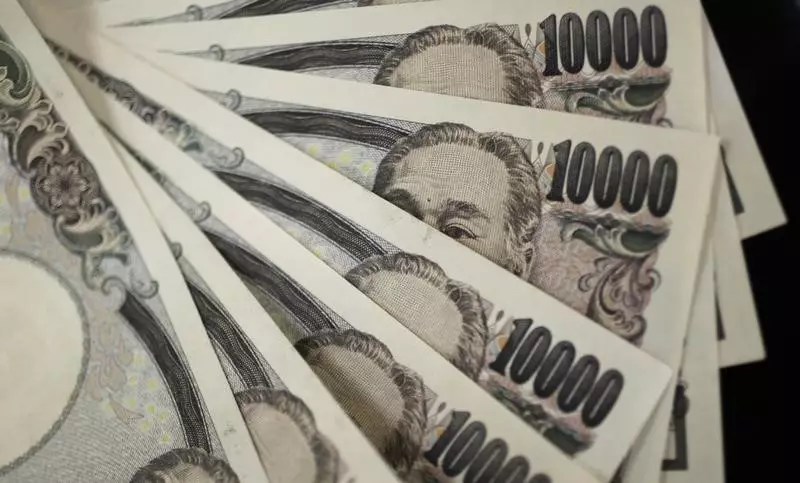The Japanese yen has continued to weaken, facing little relief after signals from the Bank of Japan and increased expectations of higher U.S. interest rates. The USDJPY pair, which measures the amount of yen needed to purchase one U.S. dollar, experienced a significant surge beyond the 160 level after what analysts referred to as a “flash crash” on Friday. Despite Japanese markets being closed for a holiday, the USDJPY pair climbed as much as 1% to a 34-year high of 160.20, approaching levels last seen in 1986.
The weakness in the yen persisted even after the Bank of Japan’s meeting on Friday, where no concrete signals were given regarding monetary policy. While the BOJ did raise its inflation outlook for the upcoming years, it also revised down its expectations for economic growth. This raised concerns about how aggressively the BOJ could potentially tighten its monetary policy this year. In March, the BOJ had raised rates for the first time in 17 years, citing expected inflation growth due to substantial wage increase. However, this move only briefly supported the yen.
Inflation and Interest Rates
On the domestic front, softer-than-expected inflation data from Tokyo cast doubt on the BOJ’s forecast for higher inflation. In April, inflation fell below the central bank’s 2% annual target rate. Additionally, the widening gap between U.S. and Japanese interest rates added pressure on the yen. The U.S. PCE price index data, which is the Federal Reserve’s preferred measure of inflation, exceeded expectations for March. This led to speculations that the Fed would not rush to cut interest rates. The expected hawkish outlook from the Fed, with a possible rate cut in September or the fourth quarter, further bolstered the dollar’s strength against the yen.
The USDJPY pair broke through levels that traders believed would prompt government intervention in the currency market. The threshold of 155 was previously seen as the point at which the government would allow the yen to depreciate, but this was not the case. While Japanese officials issued verbal warnings, their inaction suggests limited capacity to halt the yen’s decline. A weaker yen, however, benefits Japan’s export-driven economy.
The Japanese yen’s continued weakening can be attributed to a combination of factors, including the lack of clear signals from the Bank of Japan, soft domestic economic data, and the growing gap between U.S. and Japanese interest rates. The currency market dynamics, along with expectations of a dovish stance from the Fed, have further propelled the USDJPY pair to levels not seen for decades. The implications of these developments on Japan’s economy and monetary policy remain to be seen as global economic conditions continue to evolve.

